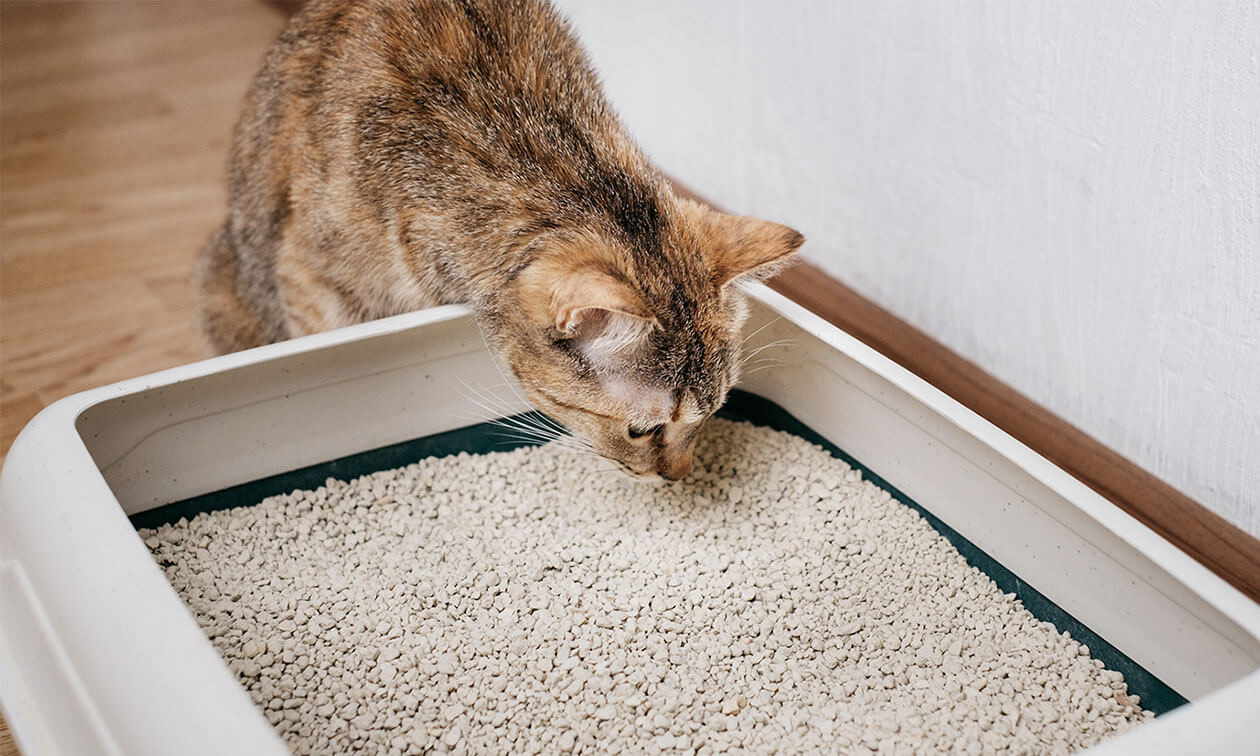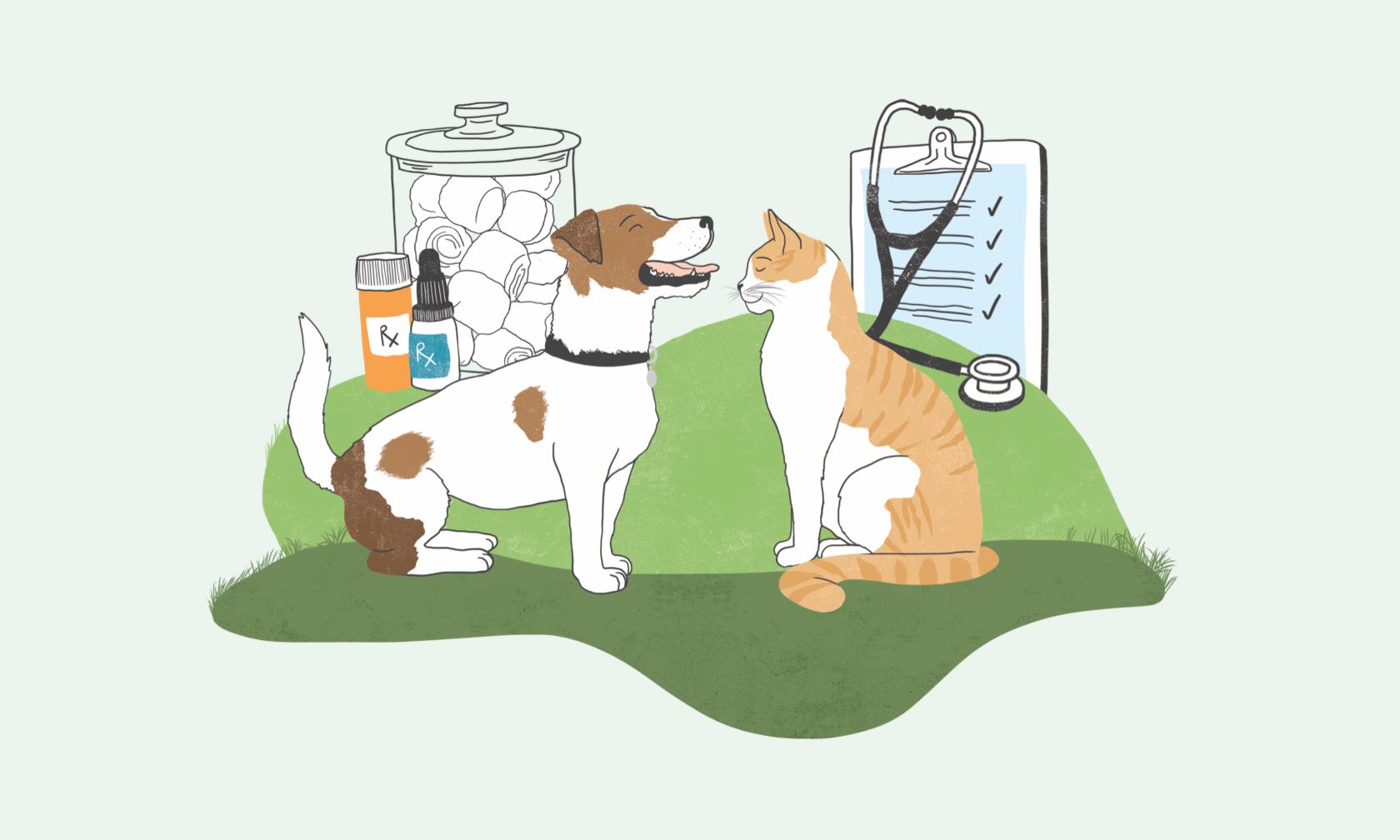House soiling is one of the most common reasons cats are surrendered to shelters or kicked out of the home. The truth is, your cat is peeing or pooping outside the litterbox for a reason and it’s up to you to address it. That’s the fastest and most effective way to get things back to normal and your cat using their litterbox again. Your veterinarian can be your partner in determining why your cat is not using the litter box.
Reasons Cats Pee and Poop Outside the Litterbox
For a cat to eliminate where they feel safe and secure is the most natural thing in the world. If your cat is soiling outside the box, they’re trying to tell you something is wrong. They are either dealing with a medical, behavioral or litterbox setup issue.
Your cat is not being bad or misbehaving. They aren’t mad at you or soiling out of spite. That would take a complex string of thoughts and actions well outside your cat’s capability. They’re asking for help.
Medical Reasons Cats Don’t Use the Litterbox
Cats are great at hiding illness and injury. If your cat is not using the litterbox or misses the litterbox, there’s a good chance something medical is going on. A trip to your veterinarian is your top priority.
Things like urinary crystals, feline lower urinary tract disease, and constipation are common causes, but any pain or discomfort can cause soiling. Spinal or joint pain, ear infections, paw pad pain, or any discomfort can be a factor.
It’s even possible for your cat to experience pain using the litterbox, associate that pain with the box, and then avoid the litterbox even after the medical issue is resolved.
Work with your veterinarian first to check for any possible medical problems. Be sure to note any other changes to your cat’s normal behavior, like eating and drinking habits, comfort with handling, energy, and play levels.
Behavioral Reasons Cats Don’t Use the Litterbox
Just like people, cats can feel fear, stress, and anxiety. If something has caused your cat to feel more stressed than normal, they often tell us through litterbox problems.
There are so many things that can trigger a behavioral response. Here are just a few:
- Medical issues
- Not getting along with another pet
- A new pet or person in the home
- A new baby
- An outdoor cat they can see or smell
- Changes to the litterbox setup
- Moving or other big changes to their environment
- People in the home not getting along
- A change in their relationship with you
- A scary or stressful event
- Changing litter
- Sides are too high for them to get in especially if they have OA cat pain
The best way to resolve this soiling is to find and address the trigger. For example, if you have pets who aren’t getting along, work on the relationship. If there’s a cat outside causing stress, use humane methods like motion-activated sprinklers to encourage that cat to stop visiting your yard.
You can also reduce stress generally with things like:
- Play using a wand toy to replicate hunting
- Spending more quality time with your cat
- Providing lots of mental and physical enrichment
- Helping them get comfortable with things that make them nervous, like loud sounds or visitors
- Increasing the number of resources available to your cat (food, water, litterboxes, high spots, hiding spots, resting/sleeping spots, and scratchers)
Your vet may suggest supplements or anxiety medication. Keep in mind these aren’t necessarily going to solve the problem on their own. Addressing the trigger and lowering stress is still vital.
Litterbox Setup Problems
Let’s face it, the litterbox is not fun, but to your cat, litterbox setup is everything. If the litterbox set up doesn’t meet their natural, instinctual needs, they will look for an alternative that does.
Considerations to make for a litterbox setup include size of the litterbox, the number of litterboxes, where to put them, and type of litter. Finding the right combination for your cat can make the difference between using the box and soiling out of it.If your cat is still house soiling after getting the green light from your veterinarian and making adjustments, hope is not lost. Try working with a certified feline training and behavior expert. They regularly deal with soiling cases and have tons of tools they can use to help pinpoint the issue, resolve it, reduce stress, and encourage your cat to use their litterbox again.
ZPC-04486



